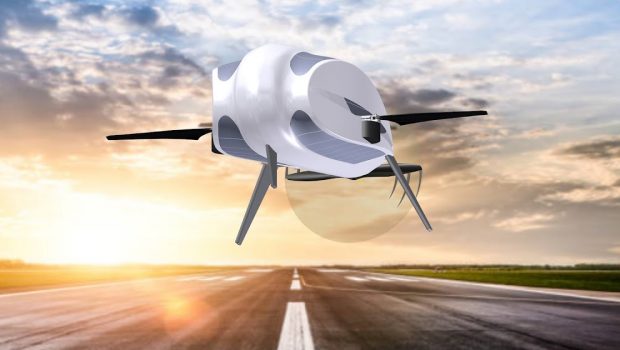The Blaenjet Could Inspire A New Vertical Lift Technology With The Hemi-rotor Aero
If our lab tests continue on their current trajectory,” Zachary says, “we are confident in our prototype” [configurado con hemirrotor] It will have the most efficient hover and forward flight profile of any rotorcraft VTOL aircraft.”
Blaenjet is applying the Hemirotor concept to a subscale drone as part of a path to demonstrate how large manned or unmanned aircraft can scale in EVTOL applications from configuration packages and cargo delivery to transportation and tactical military roles. Can do.
Blainjet president Cary Zachary explored the setup while evaluating a series of digital models that combine rotor design with an electric drivetrain for Horizon Aeronautics’ “hoverbike,” a 9-foot-long, four-foot-wide vehicle. Is. Proposed short distance commuter.
| The Blaenjet could inspire a new vertical lift technology with the hemi-rotor aero |
The “half-rotor” design of the Blaenjet places the familiar vertical-lift rotors (as seen on helicopters, UAMs, or drones) partially within opposite sides of an enclosed fuselage. There is also a pair of electric motors in the airfoil-shaped fuselage to drive the elevator rotors. A third engine located in the empennage on an inverted V-tail drives a thruster strut.
The concept revolves around separating the reciprocating rotor blades from the moving blades, in effect neutralizing the reciprocating rotors. In hovering flight, conventional open rotors generate an equal amount of lift in all directions. But when a conventional helicopter flies forward, its rotor blades move relative to the wind and move away from it during rotation. This creates an unevenness of lift on opposite sides of the rotor arc, eventually creating a difficult speed limit.
Blainjett solves the problem by locking the inner half of each rotor disc inside the plane’s fuselage. The fuselage includes an internal “floating door” and a series of upper and lower vents that facilitate control of pitch and yaw (and internal aerodynamic pressure relief) when hovering. Roll control is affected by the power input to the mid-fuselage lift rotors.
In hover and during the transition to forward flight, the rotors on opposite sides of the fuselage rotate in relative air (left rotor, clockwise – right rotor, counterclockwise). As the Blainjet subscale prototype transitions from hover to forward flight with the thrust of its propeller, its upper vent doors are closed and the retracting rotor blades are shielded from relative wind, negative drag, loss of lift and eventual negative lift. which are high speed. The streamlined fuselage, as well as the forward-facing blades, in contrast, produced progressive lift.
This allows the rotors to slow down and stop in a fixed straight or swept wing position as forward speed increases. In this configuration, the rotors become fully articulated “wings”, with very little drag and are therefore very efficient in forward flight. In the highest speed flight mode, they can actively sweep backwards, spinning in reverse for further drag reduction. The speed limits imposed by the inequalities of drag and lift of compound-rotor designs are eliminated without the complexity, drag and weight penalties of familiar tilt-rotor aircraft.
Positive and repeatable laboratory tests of the prototype hemirotor at various stages of flight showed the expected lift and drag profiles for semi-enclosed rotors in both rotating and fixed modes. The results confirmed the Blainjet’s baseline assumptions and provided experimental data for construction during the next phase of testing.
The company has secured the use of the Vertiq electric motor module for integration into its upcoming subscale prototype (V2). Vertic’s electric motor modules are capable of preventing rotation during selected phases of flight and maintaining an aerodynamically favorable fixed position or rotating freely in the opposite direction.
In a joint development partnership, Fenris Electric Systems will create custom flight controls.
As V2 testing of the Semidrone prototype progresses, Blaenjet is seeking potential manufacturing partners to help enhance the concept and validate the design intellectual property. Interested parties may contact Carrie Zachary as detailed below.
By sharing this article you can help spread value to others looking for this type of information. If you at ValenciaCars value the work we do for you and find it useful, we would like to do you a big favor: please share the article on WhatsApp, Facebook, Twitter and your other networks.
So Blaenjet Aviation, an innovative aerodynamic propulsion technology start-up, announced that preliminary testing of its hemirotor aerodynamic concept has confirmed its ability to deliver faster and more efficient performance in VTOL aircraft.








Gloss